

For most people, technology makes things easier. For people with disabilities, technology makes things possible.
...any device, system or design, whether acquired commercially or off the shelf, modified or customised, that allows an individual to perform a task that they would otherwise be unable to do, or increase the ease and safety with which a task can be performed.
Assistive technology (AT) is any device, system, or design used by individuals to perform functions that might otherwise be difficult or impossible. Such technology may be something as simple as your common household items such as a carrot peeler to the more complex products such as pressure care mattress for the prevention of pressure sores. In short, anything that assists individuals continue to carry-out daily activities can be considered assistive technology.
Many of us rely on technology such as microwaves, computers, mobile phones and remote controls to perform simple activities in our daily lives. For people with any physical or cognitive difficulties, impairments, or disabilities, AT can be critical to assisting people learn and communicate more effectively, participate in the work environment, achieve independence, and improve their quality of life.
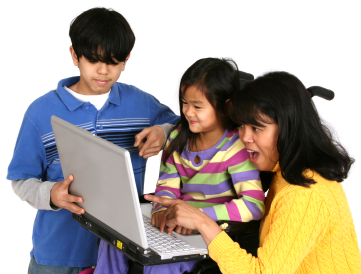
In Australia alone, almost 4 million individuals have a disability or functional limitation. Many could benefit from Assistive Technology in some aspect of their daily lives.
Assistive Technology benefits not only the individual users of the AT but family members and carers, employers, teachers and other community members who interact with users of AT.
Together with access, Assistive Technology gives individuals the opportunity to participate in community life which benefits us all.
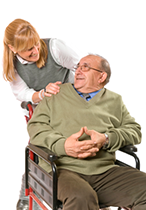
A few example scenarios of how Assistive Technology can aid in daily living include:
There are many different categories of Assistive Technology available ranging from simple “low-tech” devices such as pencil grippers to more “high-tech” items such as voice-control software used to control a computer instead of a keyboard.
The South Carolina Assistive Technology Program provides a detailed definition of Assistive Technology and the types of Assistive Technology available. Further information is available at http://www.sc.edu/scatp/what.htm.

Devices that assist in daily living and independence. Examples include modified eating utensils, page turners, dressing aids, emergency call systems, adapted personal hygiene aids.

Devices that assist people with speech and/or hearing disabilities communicate: communication boards, speech synthesisers, and modified typewriters, head pointers, text to voice software.

Headsticks, light pointers, modified or alternate keyboards, switches activated by pressure, sound or voice, touch screens, special software, and voice to text software.

Electronic systems that assist people control various appliances, switches for telephone, TV, or other appliances which are activated by pressure, eyebrows or breath.
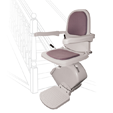
Structural adaptations that remove or reduce physical barriers: ramps, lifts, bathroom changes, automatic door openers, expanded doorways.

Replacement or augmentation of body parts with artificial limbs or other orthotic aids such as splits or braces.
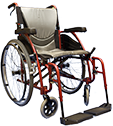
Devices that assist people move within their environments: electric or manual wheelchairs, modifications of vehicles for travel, scooters, crutches, canes and walkers.

Devices to enable participation in sports, social, cultural events. Examples include audio description for movies, adaptive controls for video games, adaptive fishing rods, cuffs for grasping paddles or racquets, seating systems for boats.

Adapted seating, cushions, standing tables, positioning belts, braces, cushions and wedges that provide body support to assist people perform a range of daily tasks.
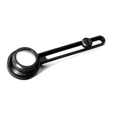
Aids such as magnifiers, Braille and speech output devices, large print screens, hearing aids, visual alerting systems, telecommunication devices.
Our Assistive Technology database contains about 7,000 AT products and services, updated regularly, free to browse.
This presentation reports on a research project between ILCA, Novita and UWS on how ICF‐based cost‐effectiveness analyses can provide a methodology that users of assistive technology (AT) systems can employ to direct economic analyses of their own AT systems, which include AT devices, care work and accessible environments. The presentation first introduces the methodology and then explores how such economic analyses might overcome the dilemma posed by the UN Convention on the Rights of Persons with Disabilities: the dilemma between the right to reasonable accommodation and the limitation of disproportionate or undue burden.
The story of Australia’s AT collaboration stems from a shared vision by an interdisciplinary group of practitioners and academics.
The vision is that people will have access to appropriate assistive technology when they need it, as well as built and social environments that facilitate maximum independence.
In November 2006 the Fremantle Collaboration obtained from University of Western Sydney (UWS) Research Partnerships Program a grant to investigate the economic framework for people with a disability and the provision of specialist equipment for their needs. The Research Partnership Project is entitled Assistive Technology in Australia: Economic Analyses from a user standpoint – methodological implications. Independent Living Centres Australia; National Council on Rehabilitation Engineering and Novita Tech are grant industry partners.
Research papers, Updates and presentations by the AT Collaboration Group
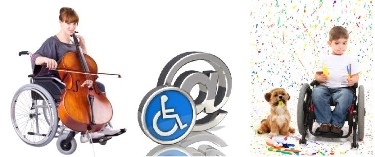
Following the success in running the 2014 Assistive Technology Workshops in Hunter, the Independent Living Centre NSW is expanding the delivery areas, touring around NSW in 2015. These sessions are FREE and are suited for people with disabilities, consumers, carers and family members.
Purpose of the tours aim to inform and educate consumers about what aides and equipment items are available to assist at home and in the community, with a variety of equipment solutions on display at each venue.
There will also be great Assistive Technology Sessions and Focus Talks on:
- Mobility Options
- Self Care Options
- Communication Options
.. more about Assistive Technology Sessions - AT on Tour
AT Mentors, a twelve month pilot program designed to give more choice and control to NDIS participants around their assistive technology (aids & equipment) and home modification needs.
AT Mentors have lived experiences of using assistive technology (AT). They assist others by mentoring and supporting them in making informed choices about their AT and home mods needs.
AT Mentors are supported by the allied health professionals at the Independent Living Centre NSW
.. more about AT Mentors

Everyone Connects is a service for people with complex communication needs, their carers and family members and professionals working with them.
The partnership with the Telstra Foundation in the 2014 pilot project, brought the ILC Everyone Connects Team to run workshops in metro, regional and rural NSW. The overwhelmingly positive responses from participants, demonstrated the need for young people with communication disabilities have to experiment and learn. Workshop attendants were inspired to connect to the digital world!
In 2015, the project is expanding nationally, aptly re-named to
Everyone Connects Australia (ECA).
.. more about Everyone Connects
Finding the “best match” between a person, their environment, and technology requires careful input from the consumer, and possibly family, carers and relevant professionals. It is an involved multi-step process requiring technical knowledge and an in-depth understanding of the individual's needs - resulting in an informed decision about the best possible solutions.
Making sure the technology matches an individual's needs in the best possible way is critical as poorly chosen AT may be of little assistance to the user, or even end up abandoned in a closet.

Anyone considering obtaining Assistive Technology should ask themselves the following questions before purchasing:
When considering AT it is important to remember that AT is not an end itself, rather is part of an ongoing therapeutic process to assist a person achieve their goals.
If you have any questions about selecting and obtaining AT, or are unsure where to start, we are here to assist. Infoline is our free information service for consumers and health professionals seeking advice about AT or access to the built environment.
Alternatively, you are welcome to visit our Display at Westpoint Blacktown and look at the range of Assistive Technology that may be able to assist you.
Inside the Display, most visitors are pleasantly surprised by a one-bedroom apartment, purposely built according to the Livable Housing Australia Design Guidelines, and is stocked with carefully chosen AT products relevant to each area.
Feel free to contact ILC Infoline
Phone:
1300 452 679 - ILC Infoline
02 9912 5800 - Reception
Email: help@ilcnsw.asn.au
** Please note that Independent Living Centre DO NOT SELL any AT equipment,
but we can provide you with the contact information of suppliers who do.
If you wish to consult with one of our friendly allied health professionals, or like to try out any equipment, we welcome you to make an appointment. Call our Infoline on 1300 452 679 today.
Our Livable Design Display is at:
Copyright © 2009-2025 Independent Living Centre NSW.
Site originally designed by the Human-Computer Interaction Laboratory, School of Computer Science and Engineering, University of New South Wales.